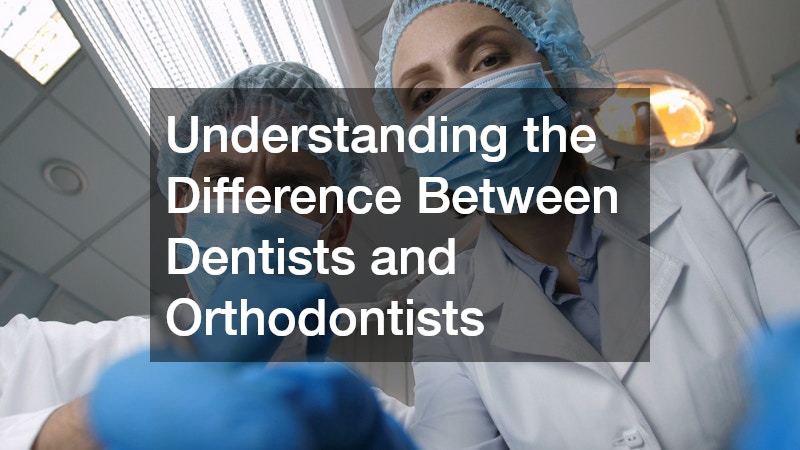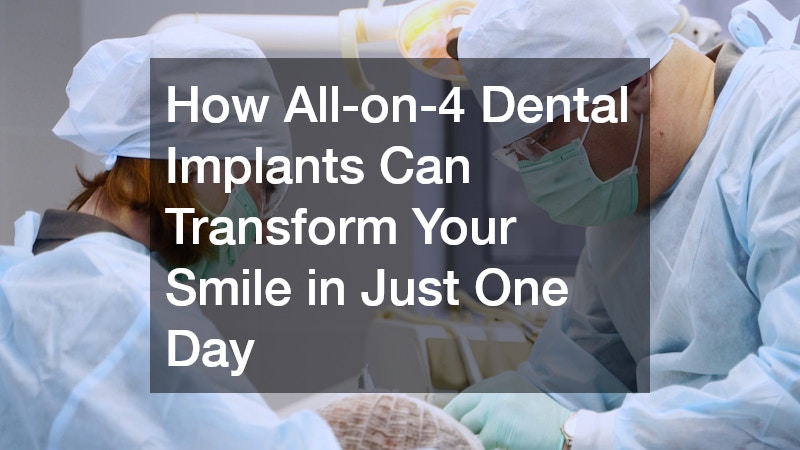When it comes to oral health, many people use the terms dentist and orthodontist interchangeably. While both professionals play essential roles in maintaining and improving your teeth and gums, their specialisations and treatments differ significantly. Understanding the difference between dentists and orthodontists will help you choose the right care for your needs and achieve the best possible results for your smile.
What Does a Dentist Do?
A dentist is a general oral health professional trained to diagnose, treat and prevent a broad range of dental issues. Their primary focus is on the overall health of your teeth, gums and mouth.
Dentists provide routine check-ups, cleanings, fillings and preventive care such as fluoride treatments and sealants. They also handle restorative procedures like root canals, crowns, bridges and extractions.
Dentists play a crucial role in identifying early signs of dental problems including tooth decay, gum disease and oral cancers. They educate patients on good oral hygiene practices such as brushing and flossing techniques, diet and lifestyle choices that affect dental health.
Most importantly, dentists assess when specialised care is required. This is where teeth alignment specialists come into the picture for cases involving tooth positioning and jaw alignment.
Who Are Specialists in Teeth Alignment?
Orthodontists are dental specialists who focus specifically on diagnosing, preventing and correcting irregularities in teeth and jaws. Unlike dentists, they undertake additional years of training to specialise in aligning teeth and jaws for functional and aesthetic improvement.
The most common treatments provided by these specialists include braces, clear aligners and retainers. These devices help correct crooked teeth, overcrowding, gaps and bite problems such as overbites, underbites and crossbites. Proper alignment improves chewing, speech, and oral hygiene while enhancing the appearance of your smile.
These experts also treat complex cases involving jaw growth discrepancies in children and adults. They work closely with dentists and other dental professionals to provide comprehensive care when multiple oral issues overlap.
Education & Training Differences
One key difference between dentists and teeth alignment specialists is the length and focus of their training. Dentists complete a bachelor’s degree followed by a dental degree, which usually takes five years in Australia. They receive broad education covering all aspects of oral health.
Specialists in teeth alignment first qualify as dentists before completing a further three years of specialised training in orthodontics. This advanced study equips them with expert knowledge in tooth movement, jaw growth and facial development. The additional training enables them to manage complex cases that require precise and long-term treatment plans.
When to See a Dentist & When to See a Specialist in Teeth Alignment
Generally, you should visit a dentist regularly for check-ups and general oral health care. Dentists can identify early problems and provide treatments to prevent further damage. They are also the first point of contact for any dental pain or concerns.
You should consider seeing a teeth alignment specialist if you have issues related to tooth positioning or jaw alignment. Common signs include crooked or crowded teeth, difficulty biting or chewing, speech difficulties or jaw pain. Many people visit an orthodontist in childhood or adolescence, but adults can benefit from orthodontic treatment at any age.
Often, dentists refer patients to these specialists for focused care. After treatment is complete, ongoing dental care continues with the dentist to maintain overall oral health.
Benefits of Treatment for Teeth Alignment
Treatment for teeth alignment offers more than just cosmetic improvements. Properly aligned teeth are easier to clean, which reduces the risk of tooth decay and gum disease. Correcting bite issues can alleviate jaw strain, headaches and uneven tooth wear.
This care can boost confidence and improve social interactions by enhancing the appearance of your smile. For children, early intervention can guide jaw growth and prevent more severe problems later in life.
How Dentists & Teeth Alignment Specialists Work Together
Dentists and teeth alignment specialists often collaborate to provide comprehensive dental care. For example, a dentist may treat cavities or gum disease before braces or aligners are fitted. After treatment, the dentist monitors the health of teeth and gums to ensure the results last.
This teamwork ensures that both the function and appearance of your teeth are optimised for long-term health. Having a coordinated approach between your dental professionals improves treatment outcomes and patient satisfaction.
Dentists and orthodontists serve different but complementary roles in dental care. Dentists manage your overall oral health and treat a wide range of dental issues, while these specialists focus on aligning teeth and jaws for better function and aesthetics. Knowing when to see each professional ensures you receive the appropriate care for your specific needs.
If you experience problems with tooth alignment or bite, consulting an orthodontist can make a significant difference. Meanwhile, regular visits to your dentist remain essential for maintaining healthy teeth and gums. Together, dentists and these specialists help you achieve a healthy, confident smile that lasts a lifetime.
.




